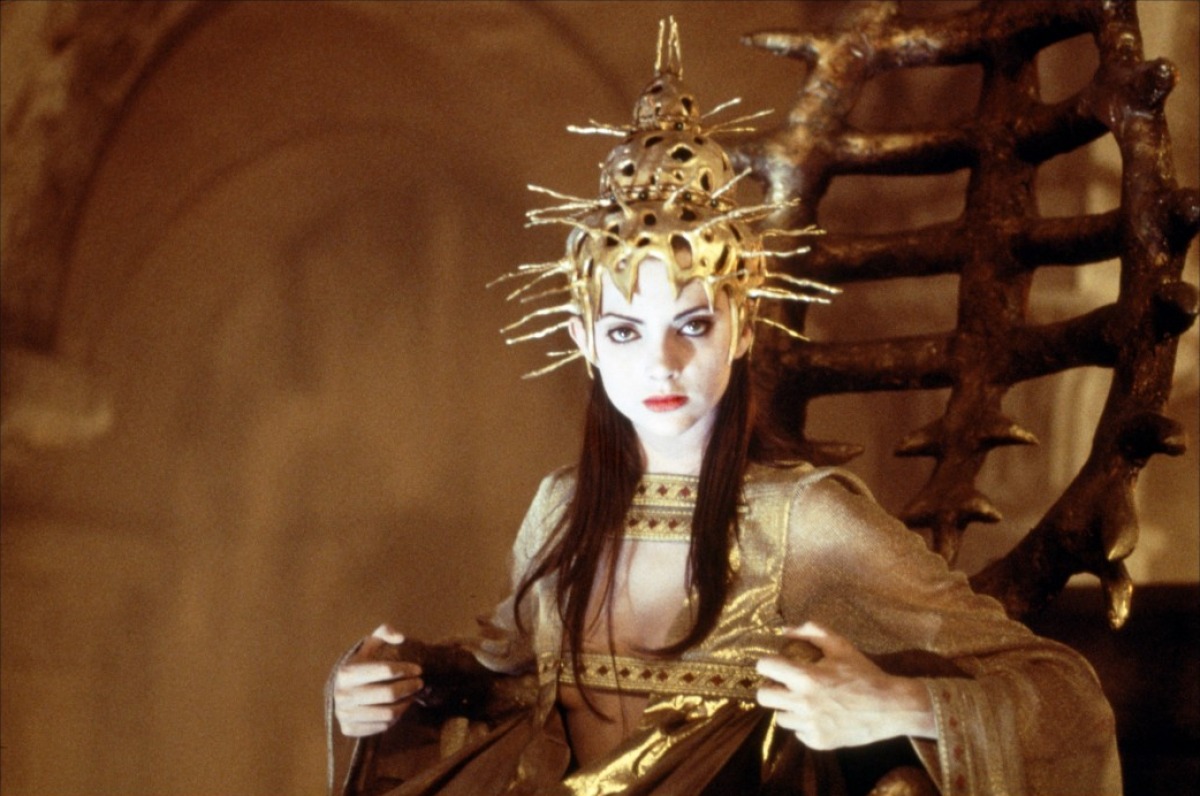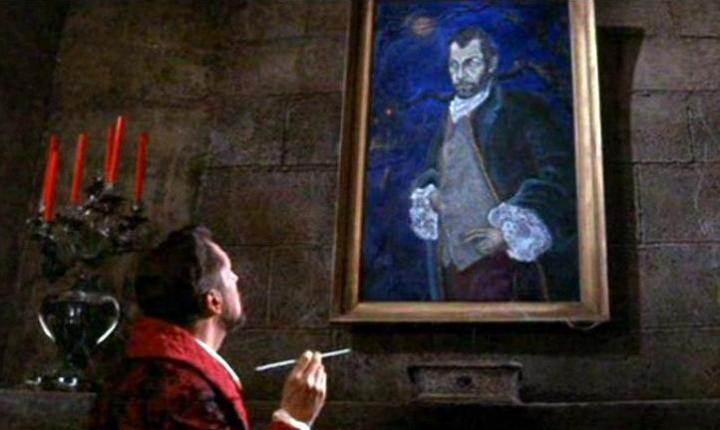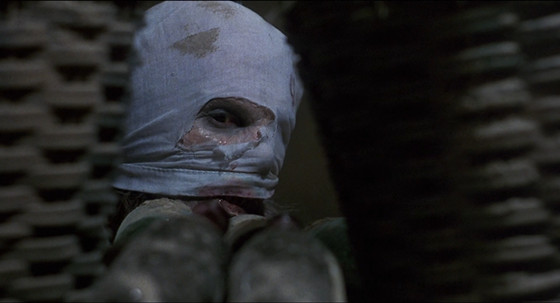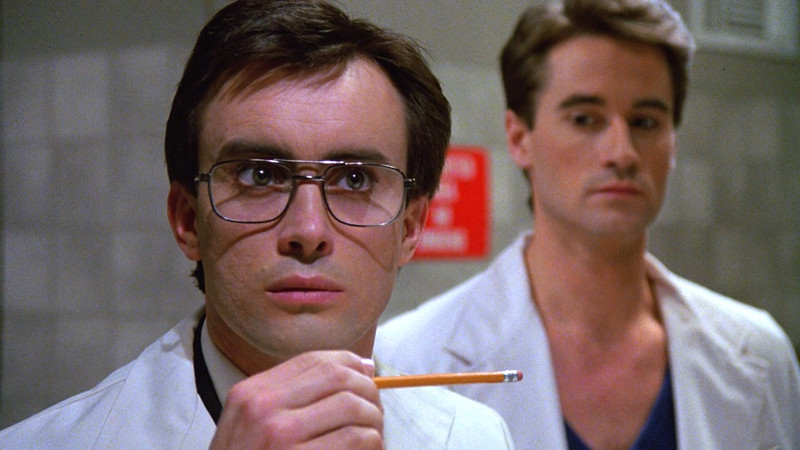
Edgar Allan Poe notwithstanding, Howard Phillips Lovecraft is perhaps the most revered writer of fantasy and horror and a key influence on contemporary horror fiction writers like Stephen King, Clive Barker and Ramsey Campbell. Simultaneously epic in scale and claustrophobic in nature, Lovecraft’s tales are absolute classics of the genre, proving highly inspirational for later generations of weird fiction writers.
A true pioneer, Lovecraft is most notable for creating an ever-expanding mythology, the Cthulhu Mythos, which links together the majority of his stories. In a single tale there are numerous references to previous stories, characters and events, as well as the sense that with each story the end of mankind and the dawn of Lovecraft’s main antagonists, The Great Old Ones draws ever closer.
With this kind of grandiose imagery and unique take on horror Lovecraft should, by all accounts, be one of the most widely adapted of all horror writers. His ethereal, consciously ambiguous style, however, has proved problematic for cinema’s more straightforward visual and narrative-centric approach. Lovecraftian literature is all about cosmic, unknown forces that literally defy descriptions.
Cinema, being a visual medium, obviously struggles with this. Nevertheless, there has been a brave few who have attempted to film the seemingly unfilmable. This list seeks to chronicle the strangest, most interesting, and greatest Lovecraft adaptations and Lovecraft-inspired films. Answer the Call of Cthulhu and read on to see what makes the Lovecraft top ten.
10. Dagon (2001)
Of all director Stuart Gordon’s Lovecraft films, Dagon feels the most genuinely Lovecraftian. It may not be an exploitation classic in the same league as Re-Animator and From Beyond, but it captures the essence of Lovecraft almost perfectly. Gordon absolutely nails the typical Lovecraft imagery with brilliantly realised mutated fish men.
The CGI may be a bit shoddy but the gills, tentacles and other sea creature practical effects simply can’t be faulted. It is in this way that Dagon feels very true to Lovecraft’s original vision of half-fish creatures in The Shadow over Insmouth. The writer’s descriptions of “shiny and slippery” creatures with “the heads of fish”, “palpitating gills” and “webbed paws” are lovingly, faithfully recreated in all their glory with some of the best creature designs to grace a Lovecraft adaptation.
As with Re-Animator, Dagon also draws on the more exploitative aspects of its source material; namely the breeding of human females with the Deep Ones, a concept obviously relished by Gordon as he lingers over images of naked nubile flesh meeting slimy tentacles.
While the film’s exploitation tendencies certainly make for an entertaining B-Movie experience, they do somewhat jar with Lovecraft’s more subtle approach, detracting from the uneasy tension at the heart of the original story. The film also suffers from the aforementioned unconvincing CGI and the two leads, poor substitutes for the ideal pairing of Jeffrey Combs and Barbara Crampton in Gordon’s earlier films.
9. The Haunted Palace (1963)
Ostensibly part of the AIP/Roger Corman/Vincent Price Poe cycle, The Haunted Palace is, in actual fact, a (fairly faithful) adaptation of Lovecraft’s The Case of Charles Dexter Ward. The title was changed when AIP realised Poe material was a more lucrative prospect than Lovecraft, leading to the film becoming one of the lesser-known Lovecraft adaptations.
While at first glance the film feels very much like Corman’s other Poe films – replete with quotes from Poe’s poem, Vincent Price’s brooding histrionics, crumbling decadent mansions, cobwebs, torture chambers and other Gothic paraphernalia – The Haunted Palace, when examined a little closer, is undeniably Lovecraftian.
The coastal New England village housing a dark secret, the villagers mutated by an unknown entity, the inclusion of the Necronomicon, and the barely glimpsed horror lurking in Ward’s dungeon are elements much more at home in a Lovecraft tale.
Although marred slightly by its confused cocktail of Poe aesthetics and Lovecraft story elements, The Haunted Palace is still a solid adaptation which manages to capture at least some of the indescribable terror that permeates much of the author’s work. This can be attributed mainly to Charles Beaumont’s typically excellent screenplay which distils Lovecraft’s lofty ideas into an easily digestible horror movie.
Taking over from Twilight Zone writer Richard Matheson who penned Corman’s previous Poe films, Beaumont, another Twilight Zone luminary, here proves himself to be a more than worthy successor. Corman does an equally commendable job directing Beaumont’s adaptation with his assured yet experimental direction, injecting a few good scares into the mix along the way.
8. Castle Freak (1995)
Stuart Gordon’s third foray into the weird world of Lovecraft is a very different affair to his previous outings. Expanding upon the central image in Lovecraft’s The Outsider of the protagonist who discovers he is the monster when he reaches out and touches his own reflection, Castle Freak is most certainly Gordon’s loosest adaptation.
In fact, unlike the earlier Re-Animator and From Beyond, Castle Freak doesn’t even advertise the fact that it’s based on a Lovecraft story with its brand new title and storyline. It’s as if Gordon couldn’t decide whether he wanted to do another Lovecraft adaptation or develop an original idea, so he ends up doing both.
Another very noticeable difference is that this time around the campy tone and slaptstick humour of Gordon’s previous Lovecraft films is eschewed in favour of a grim, unrelentingly nasty atmosphere. It is in this way that the film actually feels closer to Lovecraft’s style, the uncomfortable, sombre mood in keeping with the writer’s penchant for morbid descents into inescapable horrors.
The film also shares Lovecraft’s preoccupation with tortured souls, each of its characters going through their own personal hell. There’s the alcoholic father haunted by the night he crashed his car, causing the death of his youngest child and blinding his daughter; the mother who can’t forgive her husband and smothers her daughter with her over-protective love; the blind daughter plunged into eternal darkness and caught in the middle of never ending arguments between her mother and father; and, most tortured of all, the titular Castle Freak who has been locked in a small room all his life, beaten daily, and turned into a subhuman thing.
With its dark themes and twisted imagery, Castle Freak makes for grim viewing, but at least it captures that all too elusive bleakness absent from most of Lovecraft-based cinema.
7. The Evil Dead (1981)
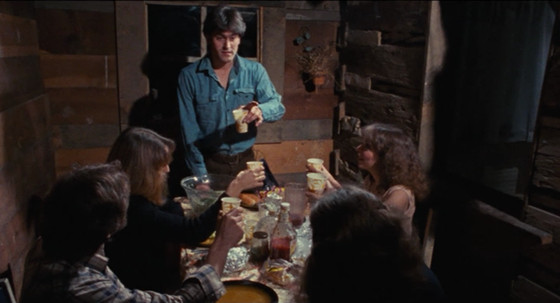
Sam Raimi’s video nasty crowd pleaser may not be the first film you think of when somebody mentions Lovecraft and cinema in the same breath, but it nevertheless remains an extremely important artefact in the history of Lovecraft-based cinema. The Evil Dead is perhaps the first film to infuse the more contemporary, visceral horror experience with the otherworldly, almost ancient quality of Lovecraft’s writing.
Obviously there’s the nod to the Necronomicon, but the relationship runs a lot deeper than a mere reference to a fictional book. In fact, the whole cabin in the woods subgenre to which The Evil Dead belongs arguably stemmed from the imagination of Lovecraft in the first place. His The Picture in the House is remarkably prescient, pre-empting the aforementioned cabin in the woods films and the backwoods slashers which rose to prominence in the late 1970s.
Bar sub-par acting and annoying promiscuous teens, The Picture in the House has it all; an old shack in the dark woods, odd macabre furnishings, dead bodies, and cannibalistic rednecks. More akin to the tales encompassing the Cthulhu Mythos is The Evil Dead’s concept of ancient evil summoned to reclaim what was once its domain. It is a concept Lovecraft returns to over and over, and Raimi’s handling of it feels very true to the source material.
A prime example of this is the force in the woods, a presence felt but – as is the case with Lovecraft – never seen. Its horror is indescribable and, therefore, best left to the viewer to imagine. The ordeal of facing this unrelenting, unspeakable horror also carries a price. Like Lovecraft’s characters, the characters in The Evil Dead are driven to hysterical madness as what they have witnessed no mortal human is supposed to see.
The Evil Dead, however, takes this a step further than Lovecraft’s writing ever could by putting the viewer through the same ordeal, attempting to drive them to hysteria along with the characters on screen.
6. From Beyond (1986)
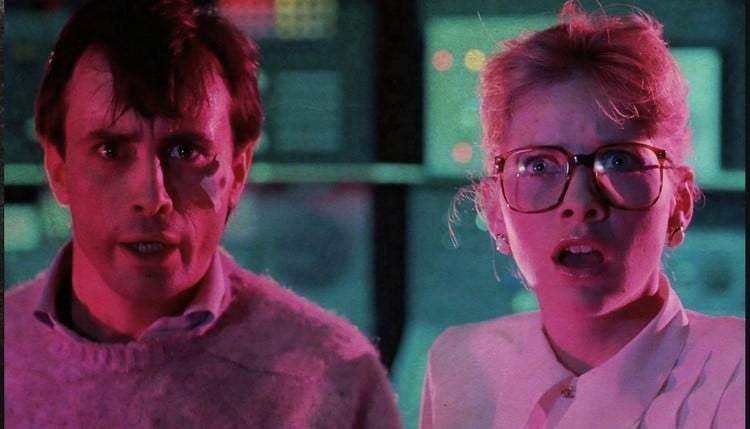
Marking the return of the Re-Animator dream team of director Stuart Gordon, producer Brian Yuzna, and stars Barbara Crampton and Jeffrey Combs, From Beyond offers up another hysterically gooey exploitation take on Lovecraftian lunacy. Proving that Re-Animator was no one hit wonder, the over-the-top hysteria of Lovecraft’s more outrageous tales is perfectly encapsulated in the trappings of an effects-heavy ‘80s B-Movie.
Indeed, the creature effects – among the best the ‘80s have to offer – are perhaps the closest anyone has come to bringing Lovecraft’s indescribable forms to life. The film is packed full of otherworldly creatures that look like they’ve come straight from another dimension. There are huge slimy creatures with toothy maws, vicious flying eels, distending pineal glands, and the repulsive Dr. Edward Pretorious, a viscous slab of shape shifting gloop.
Also like all good Lovecraft tales, From Beyond explores how seeing these creatures from another world can drive a sane man to insanity. Of course, this being the ‘80s, the characters don’t just succumb to something as quaint as simple madness, their transformation is suitably exaggerated, in keeping with the film’s exploitation leanings.
Combs mutates into a bald, brain-eating zombie with a squirming pineal gland protruding from his forehead while Crampton turns from professional doctor to crazed sex maniac and, at the film’s close, a screaming, gibbering wreck. Add to this a suitably otherworldly psychedelic purple and pink lighting scheme and genre favourite Ken Foree, and you have the recipe for a wild ride into Lovecraft’s beyond.
